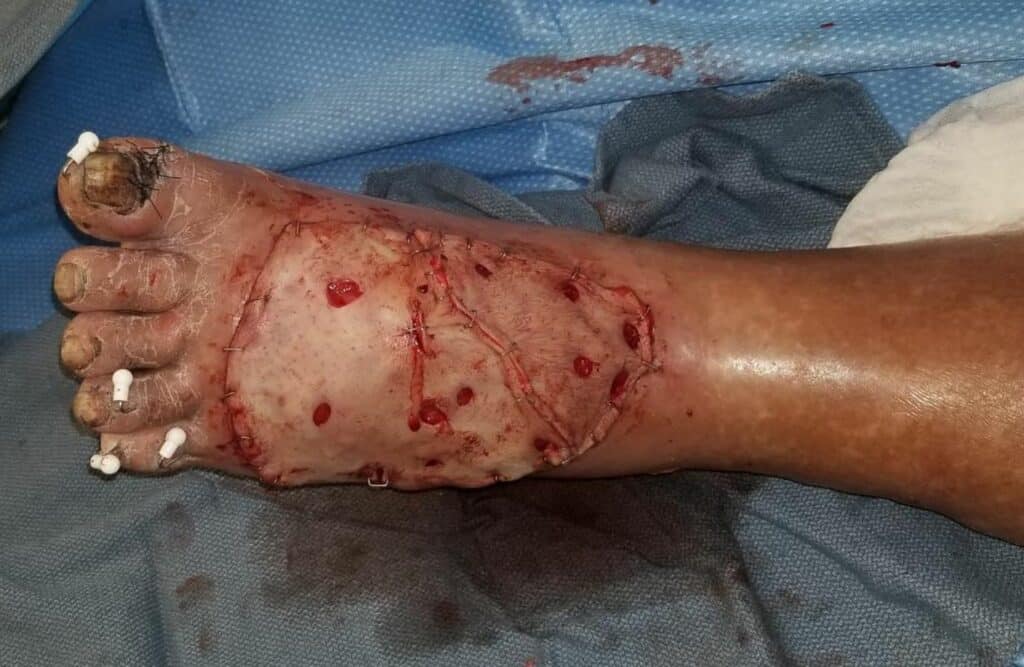Pedicled Muscle Flaps: Maintaining Vital Blood Supply
Pedicled muscle flaps involve transferring the muscle to the recipient site while preserving its original blood supply. This approach is especially valuable in areas with limited blood flow or where the muscle’s existing blood vessels are most suitable.
Free Flaps: Microsurgical Precision and Versatility
Free flaps, also known as microvascular free flaps, involve the transplantation of muscle along with its blood vessels. Unlike pedicled flaps, free flaps require microsurgical expertise to reattach the blood vessels at the recipient site. Dr. Prucz uses this technique for complex reconstructions due to its greater versatility.
Specific Muscles for Muscle Flaps: Tailoring the Solution
Various muscles can be utilized for muscle flaps, depending on the specific needs of the reconstruction. Dr. Prucz performs many different types of muscle flaps depending on the clinical situation. Here are four of the most common:
- Gracilis Muscle: The gracilis muscle, located in the inner thigh, is often used for reconstructing defects in the lower abdomen, perineum, or groin.
- Gastrocnemius Muscle (Gastroc): The gastroc muscle, located in the calf, is suitable for reconstructing defects in the lower leg and ankle region. This is the most common flap for treating an artificial joint infection.
- Latissimus Dorsi Muscle (Latissimus): The latissimus muscle, in the back, is a versatile option for reconstructing defects in various areas including the chest and upper extremities.
- Rectus Abdominis Muscle (Rectus): Dr. Prucz commonly use the rectus abdominis muscle from the abdominal area for breast and chest wall reconstruction.
Choose Precision and Healing: Phoenix Plastic Surgery
Trust the hands of an experienced expert when you require muscle flap reconstruction. Dr. Prucz’s commitment to surgical mastery, combined with compassionate care, ensures that you receive exceptional support throughout your experience. Ready to explore the possibilities of muscle flaps and restoration? Click here to schedule your consultation now!



























